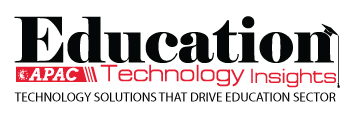THANK YOU FOR SUBSCRIBING
Be first to read the latest tech news, Industry Leader's Insights, and CIO interviews of medium and large enterprises exclusively from Education Technology Insights
New, Valuable and Realized: Cultivating Innovation in K-12 Education
Axel Reitzig, Executive Director of Innovation, St. Vrain Valley Schools
 Axel Reitzig, Executive Director of Innovation, St. Vrain Valley Schools
Axel Reitzig, Executive Director of Innovation, St. Vrain Valley SchoolsAxel Reitzig, Executive Director of Innovation at St. Vrain Valley School District, has 29 years of experience in public education. He collaborates with his team to design, build and implement educational opportunities that engage, empower and inspire students of all ages and interests.
True Innovation in K–12
“Innovation” has become one of the most common words in education today. From new apps to new pedagogies, many things are labelled innovative. But if the term means everything, it risks meaning nothing. In K–12, where time and resources are precious, we need a sharper understanding of what innovation really is—and how it truly can benefit our students.
When I joined our district’s Innovation Center, I asked myself a simple question: What exactly do we mean by innovation? My work ranged from introducing robotics and AI to helping these programs scale across schools. I wanted to make sure our definition of “innovation” wasn’t just theory but could drive real progress.
Over the years, I’ve asked teachers, students, and community members to name innovations. Paper clips. Segways. Quantum computing. Language itself. Each example sparks debate—was it truly new? Was it useful? Did it change anything? The discussions led me to my own evolving definition.
A Three-Part Test for Meaningful Innovation
At first, I settled on a two-part test: innovation must be both new and useful. A student’s cardboard prototype, for example, could certainly be new and even address a useful need. But something felt incomplete. Reading Frans Johansson’s The Medici Effect provided the missing piece. Johansson argues that true innovation must also be realized, put into practice and used by others in society.
That three-part lens—new, valuable, realized—is the clearest and most actionable definition I’ve found. It has shaped how I evaluate programs, technologies, and classroom practices. Many ideas in education are new, and many seem valuable, but, for me, only those that actually take root and get used at scale count as true innovations. Otherwise, they remain interesting potential innovations.
“Innovation in K-12 isn’t about what technologies students are using; it’s about cultivating a mindset in our students that empowers them to generate solutions for others using these technologies.”
This distinction matters because schools are constantly offered “solutions” in the name of innovation. When evaluating them, I ask: Is this genuinely new? Does it add real value for students and teachers? And will it actually be realized in practice, not just tested once and abandoned? Those questions help cut through the noise.
But there’s a deeper responsibility. As educators, it’s not enough to consume innovation created by others. Our students must learn to innovate themselves. Innovation is a skillset that can be cultivated through having students lead authentic work to solve problems and create value for real stakeholders. When students produce ideas for others that are new, valuable, and realized, they begin to see themselves as contributors to their communities.
That’s the real mission of public education in a world defined by change. Yes, we should adopt technologies and practices that meet the innovation test. But more importantly, we must prepare students not just to adapt to innovation but to lead it. This is the ultimate public school advantage.
Because, in the end, innovation isn’t about what technologies students are using; it’s about cultivating a mindset in them to benefit others using these technologies— and, through this, building their confidence to realize their ideas in the world.
Read Also
Designing Learning that Transforms and Fosters Change
Stop Chasing Interesting. Start Choosing Impact.
Leading with Purpose to Strengthen Campus Belonging
Achieving Educational Excellence through Meaningful Engagements
Beyond Administration: How a School Management System Transforms Learning Communities
Empowering Educators through Purposeful, Connected and Transformative Learning

I agree We use cookies on this website to enhance your user experience. By clicking any link on this page you are giving your consent for us to set cookies. More info

However, if you would like to share the information in this article, you may use the link below:
www.educationtechnologyinsightsapac.com/cxoinsights/axel-reitzig-nid-3481.html





















